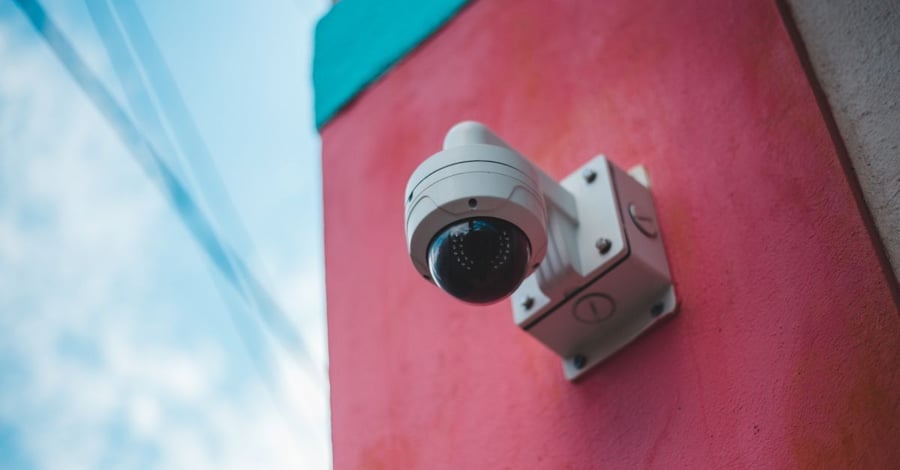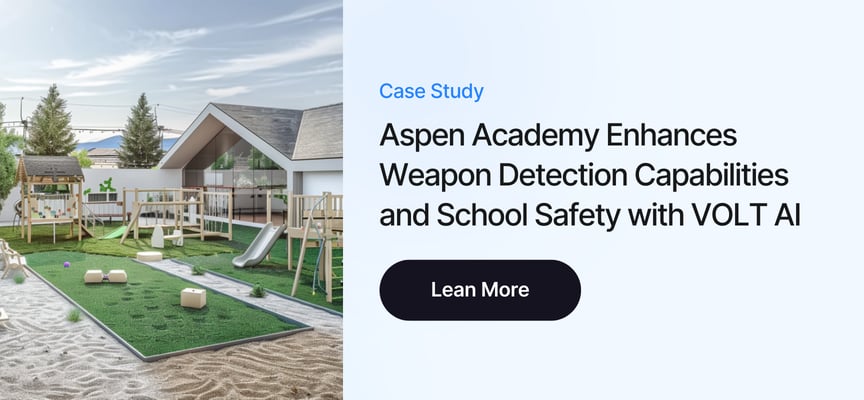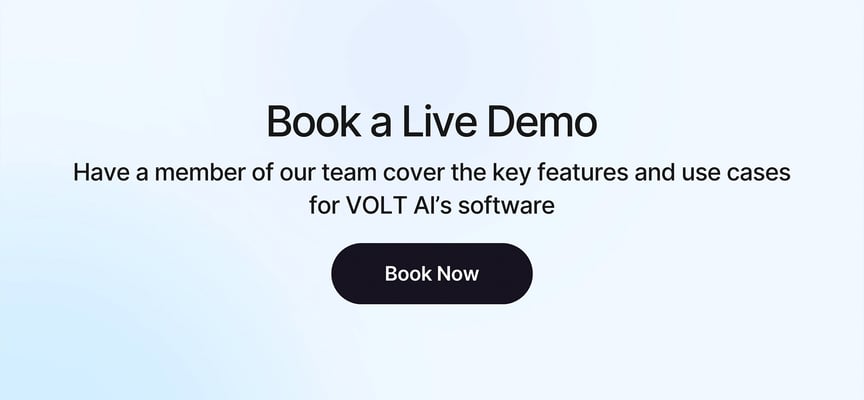When school administrators search for the best AI security camera for schools, they're often led to believe specialized hardware is essential. The reality challenges this assumption: AI intelligence resides in software, not camera hardware. Your school's existing IP cameras likely already possess the technical specifications needed for sophisticated threat detection, weapon identification, and emergency response without requiring expensive hardware upgrades.
Key Takeaways
- Intelligence resides in software, not hardware: AI detection capabilities come from sophisticated algorithms analyzing video feeds. Your existing IP cameras already support advanced AI security features when paired with the right software platform.
- Most school cameras are already sufficient: Standard IP security cameras meet the basic requirements for AI-powered threat detection without replacement. Schools implementing AI security systems rarely need to purchase new camera hardware.
- Camera performance varies minimally: Detection accuracy differences between camera models are negligible when using the same AI platform. Software capability matters far more than camera specifications for identifying weapons, medical emergencies, and security threats.
- Assessment frameworks reveal compatibility: Schools can evaluate current camera infrastructure using straightforward technical criteria to make informed decisions about their existing systems without vendor pressure.
The AI Camera Misconception
School administrators face constant pressure to upgrade security infrastructure. Vendors pitch "AI-powered cameras" as revolutionary solutions. The truth disrupts this narrative entirely.
Security industry marketing has created a pervasive myth that specialized cameras are required for AI detection capabilities. Schools searching for the best AI security camera for schools encounter vendors insisting on complete hardware replacement. The reality is simpler: understanding why intelligence matters more than hardware specifications reveals that AI capabilities reside in software, not camera equipment. Your school's existing security cameras likely already possess the technical specifications needed for sophisticated threat detection.
Where Intelligence Actually Lives
AI security systems work through two-part architecture. Cameras capture video feeds while software analyzes those feeds to identify threats, unusual behavior, and emergencies. The analytical heavy lifting happens in the software layer, where computer vision algorithms trained on millions of images identify weapons, detect falls, recognize fights, and track movement patterns.
Modern IP cameras serve as data collectors. They capture video at specified resolutions and frame rates, then transmit data to processing systems. The camera's job is simple: deliver clear, consistent video feeds to the AI platform. This separation of capture and analysis explains why the best AI security camera for schools isn't about the camera at all.
This architecture explains why schools implementing VOLT AI rarely replace existing cameras. Prescott High School activated AI monitoring across their entire campus without purchasing a single new camera. Their standard IP cameras provided everything the AI software needed to detect weapons, identify medical emergencies, and monitor security threats in real time. Schools looking to understand how AI security cameras deliver unexpected benefits beyond weapon detection discover that software intelligence enables comprehensive safety monitoring through existing infrastructure.
Read our AI Security Camera Guide.
The Camera Capability Assessment Framework
Schools can evaluate their existing camera infrastructure using straightforward technical criteria. This assessment reveals whether current systems support AI security capabilities without expensive upgrades or specialized hardware purchases.
Essential Technical Requirements
The baseline requirements for AI-compatible cameras are surprisingly modest. Most IP cameras installed in the past decade meet or exceed these specifications without being marketed as "AI cameras."
Resolution requirements start at 1080p (1920x1080) minimum to ensure sufficient image detail for object detection. Higher resolutions provide only marginal improvements in detection accuracy. Frame rates between 15-30 frames per second capture adequate motion information for security applications without requiring excessive bandwidth.
Video compression standards like H.264 or H.265 maintain image quality while managing bandwidth requirements. These formats are universal in modern IP cameras. Network connectivity through standard IP camera protocols (RTSP, ONVIF) allows software platforms to access video feeds. Virtually all IP cameras manufactured after 2015 support these protocols. Basic wide dynamic range (WDR) capabilities help cameras function in varying light conditions, and most contemporary cameras include this feature as standard equipment.
Camera Placement Matters More Than Specifications
AI systems depend on camera positioning and field of view more than hardware specifications. Schools should prioritize camera placement strategy over hardware upgrades when implementing AI security systems. Understanding why intelligent coverage beats simply adding more cameras helps administrators make strategic decisions about their security infrastructure.
The University of Illinois Chicago achieved comprehensive campus coverage using 142 existing cameras by optimizing camera angles and coverage areas. Strategic placement enabled their AI system to detect weapons, monitor for medical emergencies, and respond to security threats without purchasing premium camera hardware.
Real-World Detection
Testing reveals minimal performance differences between camera models when using the same AI platform. Schools can validate this by comparing detection results of a software AI solution across their existing camera infrastructure, demonstrating that software capabilities matter more than camera brand or price.
Software Capabilities Drive Performance
The AI platform determines detection capabilities far more than camera specifications. VOLT AI demonstrates this principle across hundreds of school deployments nationwide. Schools using cameras ranging from basic IP models to premium PTZ systems achieve comparable security outcomes when using the same AI software platform. For administrators evaluating how to maximize security ROI when investing in technology, understanding this software-first approach prevents unnecessary hardware expenditures.
Software-based threat detection enables schools to identify weapons within 1-3 seconds, detect medical emergencies in 15-45 seconds, and monitor for fights and unauthorized access 24/7. These capabilities come from advanced computer vision algorithms, not specialized camera hardware.
Why Vendors Push Hardware Upgrades
Understanding vendor motivations helps schools make informed purchasing decisions about security technology. Some security companies manufacture both cameras and software, naturally encouraging complete system replacements to maximize sales revenue. Other companies build business models around hardware sales margins, recommending camera upgrades to generate additional revenue beyond software licensing fees.
Schools should scrutinize any vendor insisting on complete camera replacement for AI security implementation. Critical questions to ask include:
- What specific technical limitations prevent our existing cameras from working with your software?
- Can you demonstrate detection performance differences between our current cameras and your recommended models?
- Will your AI platform work with our existing IP camera infrastructure?
Administrators wrestling with whether to integrate with existing systems or replace their entire school security camera infrastructure should demand clear technical justification for any recommended hardware changes.
The Financial Impact of Hardware Myths
The "AI camera" myth carries significant cost implications. Schools planning security upgrades often allocate budgets for complete camera replacement when software solutions would suffice, wasting limited funding on unnecessary hardware purchases.
Real Cost Comparisons
Consider a typical high school with 100 security cameras requiring AI monitoring capabilities for weapon detection and emergency response. A detailed breakdown of how much security cameras actually cost for schools reveals the dramatic difference between hardware-focused and software-focused approaches:
Complete camera replacement approach:
- Hardware costs: $200,000 for new cameras, installation, and infrastructure
- Software costs: $60,000 annually for AI platform
- Total first-year cost: $260,000
Software-only approach with existing cameras:
- Hardware costs: $0
- Software costs: $60,000 annually for AI platform
- Total first-year cost: $60,000
This comparison reveals potential savings exceeding $200,000 in the first year alone. Aspen Academy's Chief Financial Officer discovered their entire VOLT AI system cost less than hiring a single full-time security employee, achieving 24/7 comprehensive campus coverage without any hardware costs. Schools exploring available grants for security cameras and how to structure funding requests can leverage these cost savings to maximize their security budgets.
Making Informed Camera Decisions
Schools occasionally do need camera upgrades, but these situations are specific and identifiable. Understanding when hardware changes actually benefit security outcomes prevents unnecessary expenditure on equipment that won't improve safety.
Legitimate Reasons for Camera Upgrades
Coverage gaps represent the most straightforward reason for new camera installations. AI software cannot monitor locations that lack cameras entirely. Schools identifying blind spots in hallways, entrances, or parking areas benefit from additional camera placement regardless of AI capabilities.
Severe image quality issues requiring replacement typically indicate equipment failure rather than insufficient specifications. Consistently blurry or distorted footage does necessitate hardware changes, but schools can select budget-friendly IP cameras that meet minimum AI requirements rather than premium models.
Schools still operating analog camera systems benefit from digital upgrades for AI compatibility. However, administrators can select cost-effective IP cameras that meet minimum AI requirements rather than premium models marketed as specialized AI hardware. Network connectivity limitations present similar considerations. Cameras lacking network capability cannot transmit feeds to AI processing systems, though adding network capability often costs less than complete camera replacement in many scenarios.
Assessment Questions
Schools should ask these questions before purchasing new cameras for AI security implementation:
- Do our current cameras produce clear images during normal operating conditions?
- Can they connect to our network infrastructure?
- Have we identified specific coverage gaps where cameras are needed?
- Has our IT team confirmed existing cameras meet minimum specifications for AI platforms?
- Have we tested AI software with our current infrastructure?
Camera Compatibility Assessment Checklist
This assessment reveals that most school security cameras already possess the technical capabilities needed for AI security applications without requiring specialized "AI camera" hardware:
Assessment Criteria | Minimum Requirement | Typical School Camera Status | AI Compatible? |
Camera Type | IP-enabled network camera | 85% of schools have IP cameras | Yes |
Resolution | 1080p (1920x1080) | 90% of cameras 2015+ meet this | Yes |
Frame Rate | 15 fps minimum | Standard IP cameras: 20-30 fps | Yes |
Video Compression | H.264 or H.265 | Universal in cameras post-2012 | Yes |
Network Protocol | RTSP or ONVIF support | Standard in IP cameras | Yes |
Lighting Capability | Basic WDR or similar | Common in cameras post-2016 | Yes |
Power Supply | PoE or standard power | Infrastructure already exists | Yes |
Bandwidth | 2-4 Mbps per camera | Most school networks support | Yes |
Schools meeting these basic criteria can implement AI security capabilities immediately using their existing camera infrastructure, avoiding unnecessary hardware costs while achieving comprehensive threat detection.
Implementation Without Hardware Replacement
Schools can activate AI security capabilities quickly using existing infrastructure. VOLT AI offers two deployment models accommodating different technical environments: cloud-based deployment for schools with sufficient bandwidth, and on-premises deployment for schools with limited bandwidth or large camera counts.
Both approaches integrate with existing IP cameras regardless of manufacturer or model. The system identifies weapons, detects medical emergencies, monitors for fights, and tracks unauthorized access using whatever cameras schools already have installed. Administrators seeking to understand how AI security cameras are transforming modern school safety can explore comprehensive implementation approaches that work with current infrastructure.
Maryville University reported being "up and running within days" after receiving their deployment device. The University of Illinois Chicago implemented VOLT AI across 142 existing cameras, achieving 90% faster response times to medical emergencies and 75% reduction in theft incidents without purchasing any new camera hardware. These results demonstrate that effective AI security depends on software intelligence, not specialized camera equipment.
Beyond the Camera: What Actually Matters
Effective AI security systems depend on factors that transcend camera specifications. Schools evaluating options should focus on capabilities that directly impact safety outcomes rather than hardware marketing claims.
Critical Software Capabilities
Software detection accuracy matters more than camera megapixels when identifying weapons and security threats. The AI platform's ability to identify threats and minimize false alarms determines system effectiveness. Testing real-world detection performance reveals software capabilities better than reviewing technical specification sheets.
Human verification systems reduce false alarms while maintaining rapid response times. VOLT AI's Security Operations Center reviews every weapon detection before alerting school staff, eliminating notification fatigue from false positives. This human-in-the-loop approach ensures security teams respond only to verified threats, not camera equipment specifications.
Comprehensive threat detection provides better value than single-purpose solutions. Schools benefit from platforms detecting weapons, fights, medical emergencies, and unauthorized access through the same infrastructure. This comprehensive approach protects students and staff more effectively than systems focused solely on one threat type.
Integration and Scalability
Integration capabilities enable AI platforms to connect with existing security systems and emergency notification systems for coordinated responses. Software that works with current infrastructure provides immediate value without requiring wholesale replacement of functional equipment. Schools developing comprehensive safety strategies that coordinate technology with school resource officers and emergency responders benefit from platforms designed for seamless integration.
Scalability allows schools to grow systems with changing security needs without requiring infrastructure overhauls. Software-based platforms scale by adding camera feeds rather than replacing hardware. This flexibility enables schools to expand coverage as budgets allow without being locked into specific camera vendors or models.
Read the full guide on security cameras for schools.
Frequently Asked Questions About AI Security Cameras for Schools
What makes an AI security camera different from a regular security camera?
AI security cameras aren't fundamentally different hardware. The "AI" capability comes from software that analyzes video feeds from standard IP cameras to detect weapons, medical emergencies, fights, and security threats in real time. Most schools already have cameras compatible with AI software.
Do we need to buy new cameras to implement AI security?
Most schools do not need new cameras for AI security implementation. Standard IP cameras with 1080p resolution, 15+ fps frame rate, and network connectivity work with AI software platforms. Schools should evaluate existing infrastructure before purchasing new equipment.
How accurate is AI weapon detection with standard school cameras?
AI weapon detection accuracy remains consistent across camera types when using the same software platform. Testing shows detection VOLT AI's accuracy is equivalent between different camera systems. Detection speed ranges from 1.0 to 1.2 seconds regardless of camera hardware.
What's the real cost difference between camera replacement and software-only approaches?
For a typical 100-camera school system, complete camera replacement costs approximately $260,000 first-year versus $60,000 for software-only implementation using existing cameras. This represents $200,000 in potential savings that can be redirected to training and emergency response.
How long does AI security implementation take with existing cameras?
Camera-agnostic AI security systems like VOLT AI can be operational within days to two weeks using existing infrastructure. Implementation involves connecting software to current camera feeds rather than installing new hardware, significantly reducing deployment time.
What if some of our cameras are too old for AI compatibility?
Schools can implement AI security on compatible cameras immediately while replacing only outdated equipment as needed. This phased approach provides immediate security improvements without requiring complete system replacement. Most cameras from 2015 or later meet minimum AI requirements.
Partner with VOLT AI for Smarter Security Solutions
VOLT AI transforms your existing camera infrastructure into an intelligent security system without unnecessary hardware investments. Our software-first approach delivers comprehensive threat detection using the cameras you already own, proving that the best AI security camera for schools is actually the AI software platform you choose.
Schools across the country achieve measurable safety improvements using their current camera systems with VOLT AI. Implementation takes days, not months. Our cloud and on-premises deployment options work with any IP camera infrastructure, regardless of manufacturer or model. Administrators planning comprehensive school security strategies for the modern era can leverage existing investments while achieving superior safety outcomes.
When searching for the best AI security camera for schools, remember that camera specifications matter far less than software capabilities. Your existing infrastructure likely provides everything needed for advanced threat detection, medical emergency response, and comprehensive security monitoring.
Contact us today to assess your existing camera infrastructure and discover how VOLT AI can enhance your school's security without the myth of specialized AI cameras. Let us show you how software intelligence, not camera hardware, delivers the protection your students and staff deserve.










